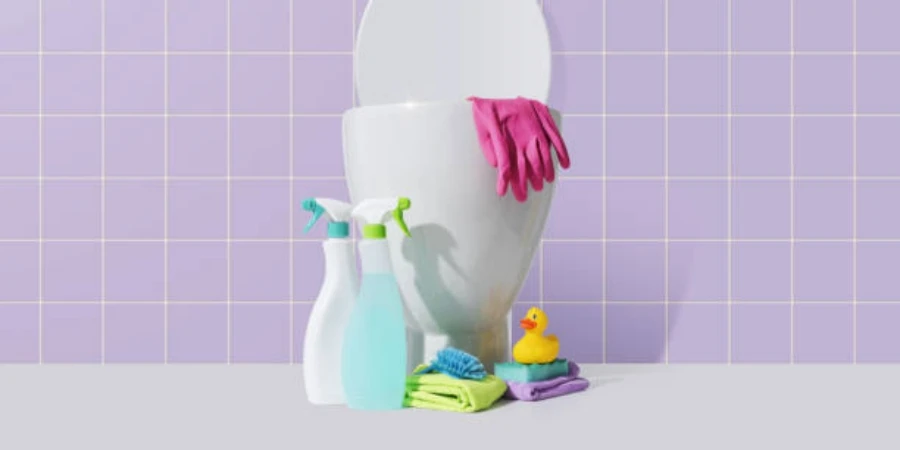Table of Contents
● Introduction
● Types of toilet cleaners and their uses
● Market trends for toilet cleaners in 2025
● Factors to consider when choosing toilet cleaners
● Top-performing toilet cleaners for 2025
● Conclusion
Introduction
Toilet cleaners are essential for maintaining hygiene and cleanliness in bathrooms. They effectively remove stains, limescale, and bacteria, ensuring a fresh and sanitary environment. With various options available—liquid cleaners, gels, tablets, and rim blocks—these products meet diverse cleaning needs and preferences. The rising demand for eco-friendly solutions has also led to the introduction of biodegradable and non-toxic formulas, providing effective cleaning while minimizing chemical exposure. Whether tackling tough stains or offering continuous maintenance, toilet cleaners are vital for keeping spaces hygienic and pleasant.
Types of toilet cleaners and their uses
Liquid cleaners for comprehensive cleaning

Liquid toilet cleaners are valued for their versatility and effectiveness in maintaining bathroom hygiene. Formulated with disinfectants, they effectively eliminate a wide range of bacteria and viruses, making them essential for sanitary environments. These cleaners tackle surface stains and limescale, particularly in high-use areas like toilet bowls. Their easy application—just a squirt along the rim, followed by a brief wait before scrubbing. Many liquid cleaners also feature eco-friendly ingredients, incorporating plant-based and biodegradable components that minimize chemical exposure while delivering strong results. Products with pine and mint fragrances offer a refreshing scent, reducing harsh odors. As sustainability gains importance, these eco-conscious options are increasingly preferred by consumers seeking effective cleaning solutions.
Gel formulas for targeted stain removal
Gel toilet cleaners offer a concentrated solution for tough stains, limescale, and mineral deposits. Their thicker consistency enables them to cling to surfaces longer than liquid formulas, ensuring effective deep cleaning, especially for stubborn rings around the toilet bowl. Typically applied under the rim or on problem areas, gel cleaners gradually break down hard water stains, rust, and bacteria buildup. Unlike liquid cleaners, which can run off quickly, gels work over time, making them ideal for embedded grime. Many gels, particularly those with hydrochloric acid, excel at dissolving calcium deposits, reducing scrubbing effort while delivering powerful stain removal.
Tablets and blocks for continuous cleaning
Tablets and rim blocks provide a hands-free, low-maintenance solution for continuous toilet cleaning. Designed to release cleaning agents with each flush, these products maintain hygiene over time. Whether placed in the tank or clipped inside the bowl, they gradually dissolve, ensuring ongoing sanitation without frequent manual application. These solutions effectively prevent limescale buildup, keeping toilet bowls cleaner for longer between deep cleans. Many tablets contain bleach or antibacterial agents that disinfect and deodorize with each flush, enhancing sanitation and odor control. Some rim blocks also release pleasant fragrances, creating a fresher bathroom atmosphere, making them ideal for high-traffic areas where frequent maintenance is impractical.
Market trends for toilet cleaners in 2025
Increasing demand for eco-friendly products
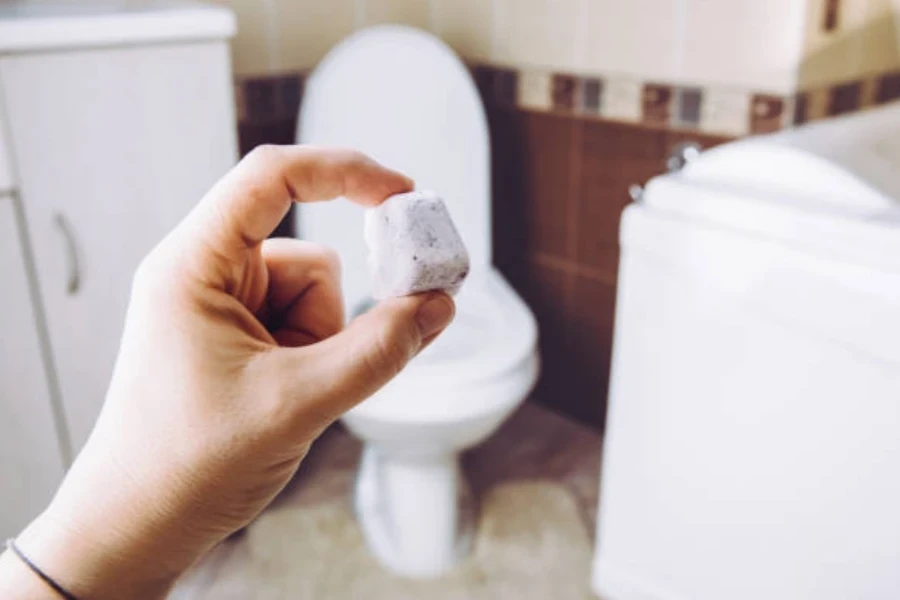
The global toilet cleaners market is valued at approximately US$ 5.11 billion in 2023 and is projected to reach US$ 7.25 billion by 2030. This growth is expected to occur at a compound annual growth rate (CAGR) of 5.20% from 2023 to 2030. The demand for eco-friendly products and innovations in cleaning technologies are significant factors driving this expansion.
In 2025, buyers are increasingly prioritizing sustainability, favoring biodegradable ingredients and refillable packaging to minimize environmental impact. This trend reflects a global shift towards reducing carbon footprints, with companies that offer plant-based formulations or non-toxic products gaining traction among eco-conscious consumers. Natural toilet cleaners, featuring essential oils or organic acids, are particularly popular for effective sanitation without compromising environmental responsibility.
Advancements in automated cleaning technology
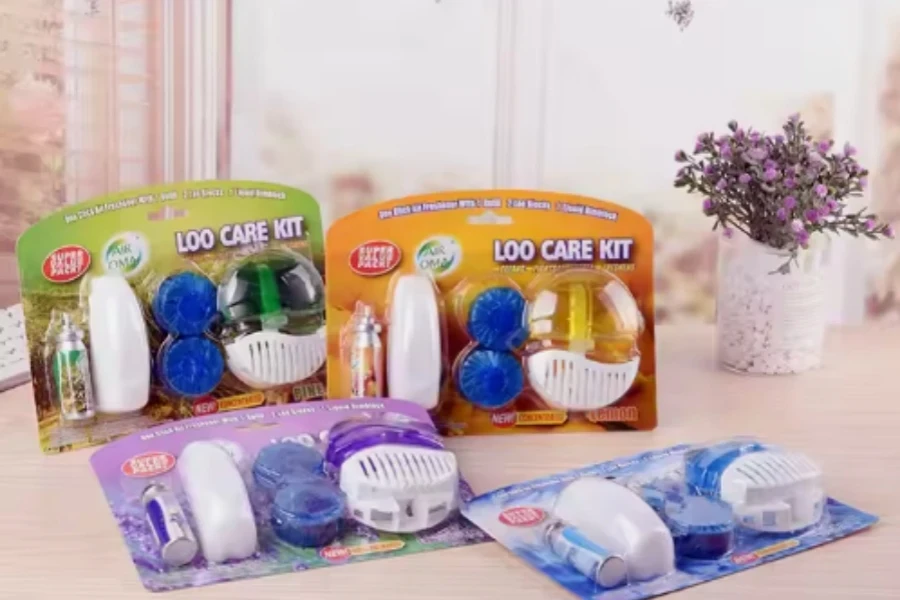
Automation is a significant trend shaping the toilet cleaner market in 2025. Consumers are increasingly seeking products that simplify cleaning routines while upholding hygiene standards. Automatic solutions like rim blocks, toilet tablets, and gel dispensers provide hands-free maintenance, releasing cleaning agents with each flush to keep toilets fresh and sanitary without manual effort. Many automated products are also septic-safe and environmentally friendly, appealing to consumers who prioritize functionality and sustainability. As these innovations develop, they not only reduce cleaning time but also lessen the need for harsh scrubbing, making them highly attractive for those looking to streamline maintenance tasks.
Factors to consider when choosing toilet cleaners
Effectiveness against tough stains and limescale
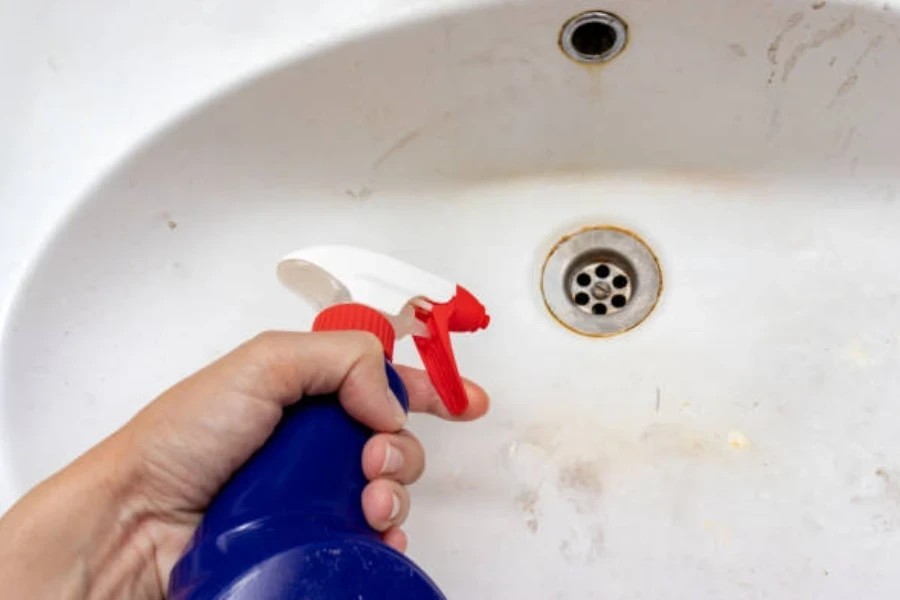
A key factor in selecting a toilet cleaner is its effectiveness against stubborn stains and limescale, particularly in hard water areas where buildup is common. Cleaners with hydrochloric acid excel at dissolving limescale by reacting with calcium carbonate, reducing the need for extensive scrubbing. Strong disinfectants, such as those containing bleach or antibacterial agents, are vital for eliminating harmful bacteria and maintaining sanitation.
For those seeking alternatives to harsh chemicals, natural acids like citric or lactic acid offer effective cleaning without the risks associated with stronger formulations. While these natural options may take longer to show results, they are gentler on surfaces and the environment, making them a preferred choice for eco-conscious consumers.
Environmental sustainability
As environmental awareness grows, the sustainability of cleaning products is becoming a crucial purchasing factor. Demand is rising for biodegradable cleaners that are free from harmful chemicals. Eco-friendly toilet cleaners, often made from plant-based ingredients, aim to reduce the ecological footprint while remaining effective. These products minimize water contamination from chemical runoff and provide safer alternatives for homes with children and pets.
Packaging is also essential, with many brands offering refillable containers or recycled materials to cut down on plastic waste. Refill programs allow consumers to purchase bulk cleaners and reuse their containers, significantly reducing single-use plastics. As both businesses and consumers embrace sustainability, eco-friendly toilet cleaners are increasingly appealing choices.
Safety and fragrance considerations
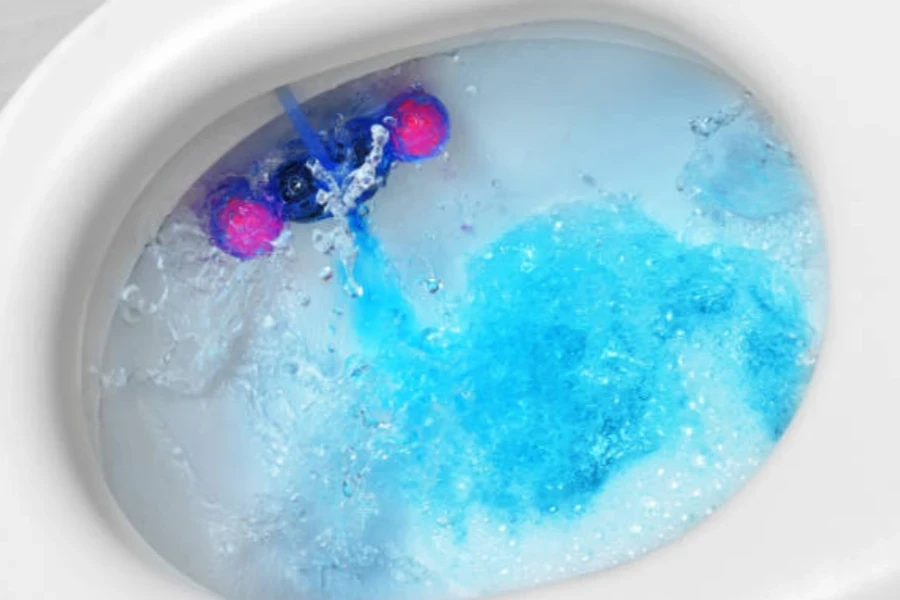
Safety is a top priority for buyers selecting toilet cleaners, especially in homes with children or pets. Non-toxic products free from chlorine bleach are preferred, as they lower the risk of accidental poisoning. Many eco-friendly cleaners meet these safety standards by using natural disinfectants like tea tree oil or eucalyptus extract, which provide antimicrobial benefits without harsh chemicals.
Fragrance also influences purchasing decisions. Traditional cleaners often have strong chemical odors that can be unpleasant. Consequently, cleaners with pleasant, natural scents like mint or citrus are gaining popularity, offering effective cleaning while leaving a fresh aroma. Additionally, some products are fragrance-free, catering to those with sensitivities or allergies.
Top-performing toilet cleaners for 2025
Best cleaners for everyday use
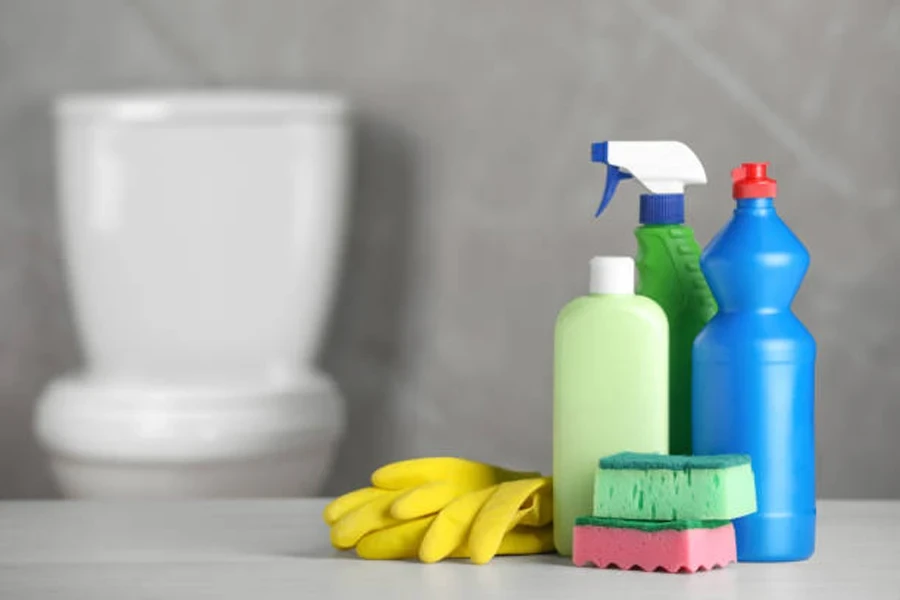
For everyday cleaning, liquid and gel toilet cleaners are highly effective in combatting daily grime and bacteria. Gel formulas, with their clinging agents, adhere to surfaces longer, allowing active ingredients to tackle tough stains and mineral deposits. They excel in addressing common issues like limescale, rust, and odor without excessive scrubbing, providing a convenient maintenance solution.
Liquid cleaners are also popular for routine use, applied along the bowl rim to quickly eliminate bacteria and neutralize unpleasant odors. Products that combine cleaning and deodorizing are particularly valued, ensuring a hygienic and pleasant bathroom environment with minimal effort.
Leading eco-friendly toilet cleaners
As sustainability increasingly influences consumer choices, eco-friendly toilet cleaners are rising in popularity. Formulated with plant-based or biodegradable ingredients, these products effectively tackle limescale and stains using natural acids and essential oils, avoiding harsh chemicals. Their appeal lies not only in their cleaning power but also in their commitment to reducing chemical exposure in homes and the environment.
This demand is fueling innovation in packaging, with many brands offering refillable options and recyclable materials. Products that highlight natural scents like mint or citrus are especially popular, providing a fresh fragrance without synthetic additives, aligning with the movement toward cleaner, greener living.
Top long-lasting cleaners
For those aiming to reduce cleaning frequency, long-lasting solutions like descaling devices and automatic toilet cleaners are ideal. Descaling devices prevent limescale buildup for years by treating water or using magnets, which significantly extends the time between manual cleanings—especially useful in high-traffic areas or regions with hard water.
Automatic toilet cleaners, such as tablets or rim blocks, release cleaning agents with each flush, maintaining cleanliness and odor control for weeks or months without reapplication. This not only minimizes maintenance efforts but also ensures consistent hygiene with minimal intervention.
Conclusion
Choosing the right toilet cleaner in 2025 involves balancing cleaning efficiency, environmental impact, and convenience. Innovations in eco-friendly formulations, long-lasting descalers, and automated solutions provide options that address both hygiene and sustainability. Whether selecting natural, biodegradable ingredients or powerful stain removers, staying informed about market trends is essential. Prioritizing products that reduce maintenance frequency while minimizing ecological footprints will be crucial for achieving cleanliness and responsibility in the coming year.
